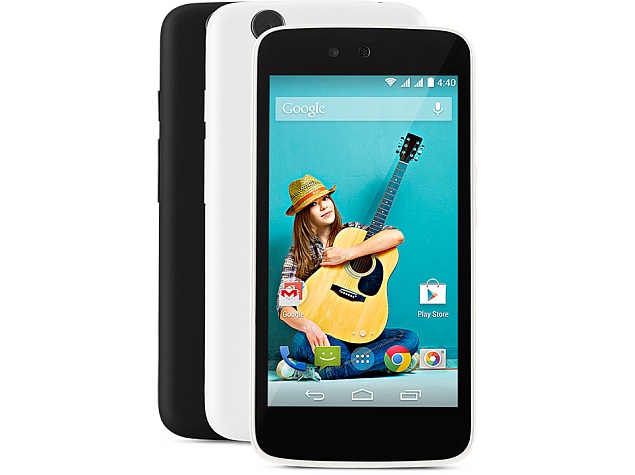- Home
- Mobiles
- Mobiles Features
- Emerging World Drives Cheap Smartphone Boom
Emerging World Drives Cheap Smartphone Boom

Phone and Internet firms are rolling out cheaper handsets and may turn to hot-air balloons to boost network coverage in developing countries, where sales of smartphones are booming.
Even though mobile network coverage is generally weaker in the developing world, firms are mining a gold rush of new clients in China, India and beyond, as smartphone demand slows in the rich world.
Several top phone and Internet companies attending this week's Mobile World Congress in Barcelona, the biggest wireless telecom fair on the planet, have unveiled new products aimed at developing markets.
Smartphone sales grew by 23 percent worldwide in 2014 to 1.3 billion units, according to a study by German research institute GfK.
As demand has slowed in smartphone-saturated markets such as western Europe, Japan and north America, it has exploded in Latin America, southeast Asia and Africa.
In response, US online giant Google has launched a low-cost smartphone in India for $105 (94 euros).
Its US rival Microsoft says it plans one that will cost $29 while the Mozilla foundation, owner of the Firefox search engine, plans one for $25.
(Also See: Apple Beats Samsung as Top Smartphone Maker in Q4: Gartner)
The world's biggest seller of smartphones, South Korean firm Samsung, has also launched products tailored for the Indian market, as its major US competitor Apple focuses on its higher-end iPhone line.
The rise of budget smartphones has also been driven by manufacturers such as Xiaomi of China, which overtook Samsung for sales in the Chinese market last year.
By 2020 about three quarters of the world's smartphones are expected to cost less than $100, consulting group Gartner estimated in a study.
"You get good lower-end smartphones for $20 and the higher end for the mass market is now around $60," said Sigve Brekke, Asia director for Norwegian telecom group Telenor, which operates in six countries in the region.
"We think that we will see these prices continue to fall this year."
He forecast there would be smartphones connected to the 4G mobile network -- currently the most advanced -- for $45 by the end of this year.
Balloons, drones
It's not just about the price, though.
In areas where home computers are scarce, "a smartphone is often the only way to get on the Internet," said Annette Zimmermann, a telecom specialist at Gartner.
Smartphone users in such markets typically demand common messaging and social applications such as Facebook and Whatsapp, online radio, a torch light, text messaging and a reliable battery, she said.
Consumers in developing markets also often want a phone with two or three SIM network cards so they can switch between different telecom operators to get the cheapest rates, or share the phone with other users.
Network coverage infrastructure still puts limits on what smartphones can do, however.
Many districts, particularly rural ones, only have the 2G coverage standard, which offers relatively low capacity to transfer data. It can handle emails and basic versions of apps, but not much more.
Some 60 percent of users in African are restricted to 2G, according to the GSMA world phone sector consortium.
It expects the number of smartphone users in the world to swell to more than three billion by 2020, compared with 2.2 billion in 2013.
To improve coverage in remote parts of the world, Google has also proposed deploying hot-air balloons or drones equipped with network cells to areas where telephone lines and towers do not reach.
The giant US-based social media network Facebook has also partnered with several telecom companies to expand Internet coverage for customers in developing rural areas.
"We're trying to help people connect with other people and share with each other," Facebook's founder Mark Zuckerberg told an audience at the congress on Monday.
Catch the latest from the Consumer Electronics Show on Gadgets 360, at our CES 2026 hub.
Related Stories
- Samsung Galaxy Unpacked 2025
- ChatGPT
- Redmi Note 14 Pro+
- iPhone 16
- Apple Vision Pro
- Oneplus 12
- OnePlus Nord CE 3 Lite 5G
- iPhone 13
- Xiaomi 14 Pro
- Oppo Find N3
- Tecno Spark Go (2023)
- Realme V30
- Best Phones Under 25000
- Samsung Galaxy S24 Series
- Cryptocurrency
- iQoo 12
- Samsung Galaxy S24 Ultra
- Giottus
- Samsung Galaxy Z Flip 5
- Apple 'Scary Fast'
- Housefull 5
- GoPro Hero 12 Black Review
- Invincible Season 2
- JioGlass
- HD Ready TV
- Laptop Under 50000
- Smartwatch Under 10000
- Latest Mobile Phones
- Compare Phones
- OPPO Reno 15 Pro Max
- Honor Win RT
- Honor Win
- Xiaomi 17 Ultra Leica Edition
- Xiaomi 17 Ultra
- Huawei Nova 15
- Huawei Nova 15 Pro
- Huawei Nova 15 Ultra
- Asus ProArt P16
- MacBook Pro 14-inch (M5, 2025)
- OPPO Pad Air 5
- Huawei MatePad 11.5 (2026)
- Xiaomi Watch 5
- Huawei Watch 10th Anniversary Edition
- Acerpure Nitro Z Series 100-inch QLED TV
- Samsung 43 Inch LED Ultra HD (4K) Smart TV (UA43UE81AFULXL)
- Asus ROG Ally
- Nintendo Switch Lite
- Haier 1.6 Ton 5 Star Inverter Split AC (HSU19G-MZAID5BN-INV)
- Haier 1.6 Ton 5 Star Inverter Split AC (HSU19G-MZAIM5BN-INV)














